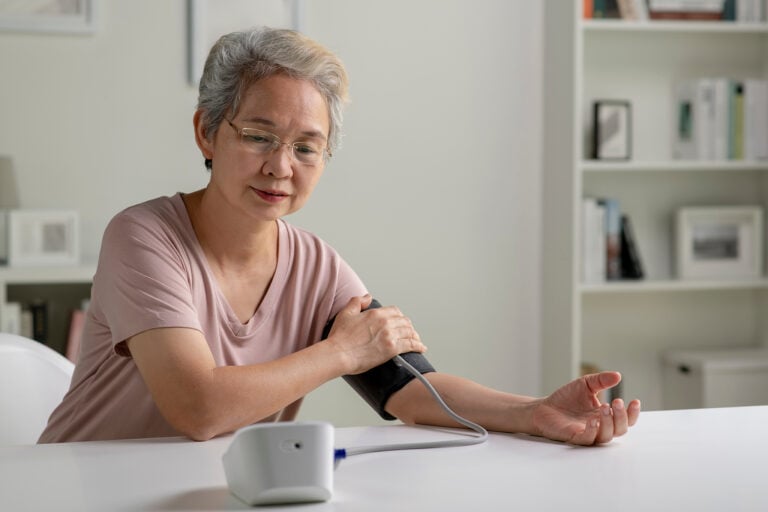8 things to keep in mind when checking your blood pressure
- Resources
Hypertension, or high blood pressure, is called the “silent killer” for a reason — it often has no symptoms, but increases your risk of heart disease, stroke and kidney failure.
“Managing blood pressure is possible, and even small changes can make a big difference,” says Lynette Smith, Program Manager, Health Management Nurses.
“As health care providers we like to think about actionable steps as SMART goals: They should be specific, measurable, achievable, relevant and time bound.”
In the case of high blood pressure, for example, a SMART goal to reduce sodium intake could look like the following:
Lynette believes healthy living works best when it works for you. Putting plans, systems and support in place will help keep your blood pressure on track.

The first step to controlling your blood pressure is knowing what it means. When you measure your blood pressure, you’ll see there are two numbers: systolic (top number) is the pressure when your heart beats, and diastolic (bottom number) is the pressure when your heart rests.
Adults should check their blood pressure regularly, either at home or at a pharmacy. Healthy blood pressure is below 120/80 mmHg, which is more of a reference point than a hard cut off. If yours is higher, please discuss it with your primary care provider.
Check out our list of eight things to keep in mind when checking your blood pressure.

Regular physical activity is one of the most effective ways to lower blood pressure. Aim for at least 30 minutes of moderate exercise, like brisk walking, most days of the week. And don’t underestimate the power of stress management, deep breathing, meditation or even a short walk can help keep your numbers in check.
Too much salt increases blood pressure. Try limiting processed and packaged foods, which are often high in sodium. Instead, fill your plate with fresh fruits, vegetables, whole grains and lean proteins. Potassium-rich foods like bananas, spinach and sweet potatoes can also help balance sodium levels.
You don’t have to do this alone. Calgary Foothills Primary Care Network offers free programs such as one-on-one appointments with our health team, including nurses, dietitians, social workers and pharmacists, and educational workshops, to help you manage your blood pressure.